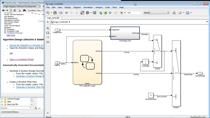How to Generate Requirements-Based Test Cases
Specification Modeling is the practice of creating models which define the expected behavior of a system. You can model “logic-driven” requirements, such as fault detection and mode logic requirements, using a Requirements Table from Requirements Toolbox. Learn how you can generate requirements-based test cases using Simulink Design Verifier from a Specification Model which uses the Requirements Table feature.
Published: 27 Jan 2023





